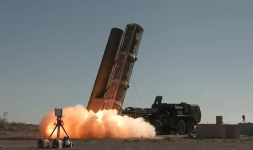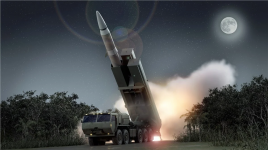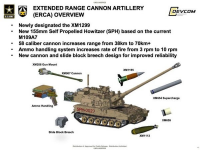The United States is faced with peer competitors—China and Russia—seeking to alter the strategic landscape and supplant U.S. influence in key regions.1 Recognizing that they were outmatched militarily by the United States (although the gap is closing), China and Russia focused on developing...

www.ausa.org
WHAT ARE THE ARMY LRPF SYSTEMS?
The U.S. Army’s top modernization priority since 2017, LRPF consists of four signature programs being developed under the direction of the Army Futures Command (AFC) cross functional team (CFT) for LRPF. These programs are: Extended-Range Cannon Artillery (ERCA); Precision Strike Missile (PrSM); Strategic Long-Range Cannon (SLRC); and the Long-Range Hypersonic Weapon (LRHW). Other LRPF initiatives include conversion of a Navy Standard Missile (SM)-6 battery by 2023 and Tomahawk missiles to engage moving targets, both on land and at sea, at ranges from 500 to 1500 km.12
The LRPF CFT Director, Brigadier General John Rafferty, describes the approach his team uses in its assessment of viable options by answering three questions: 1) Does it meet requirements for range and precision, i.e.,
Can we do it?; 2) Does operational analysis demonstrate payoff, i.e.,
Should we do it?; and 3) What is the operational feedback from warfighter exercises regarding doctrine and organizational structure, i.e.,
How should we do it? The operational analysis must be rigorous and be able to hold up under scrutiny from the Office of the Secretary of Defense (OSD) Cost Assessment and Program Evaluation (CAPE) office, which will be influential in the determination of which systems merit support from a limited pool of DoD resources.13
ERCA. The ERCA is intended to hit point targets 70 kilometers away—more than twice the 30 kilometer range of the M-109A7 155 mm howitzer. It consists of the rocket-boosted XM1113 shell and a longer howitzer barrel (58 caliber versus the current 30 caliber) adapted to the current M-109A7 Paladin system, which increases the projectile’s velocity before exiting the muzzle. Plans call for an 18-gun battalion to enter service in 2023.14
PrSM. The PrSM is a surface-to-surface, all-weather, precision-strike guided missile, fired from both the M270A1 Multiple Launch Rocket System (MLRS) and M142 High-Mobility Artillery Rocket System (HIMARS).15 As the replacement for the MGM-140 Army Tactical Missile System (ATACMS), PrSM doubles ATACMS’ current rate-of-fire with two missiles per launch pod. It is designed to attack threat air defense systems, missile launchers, command and control (C2) nodes, troop assembly/staging areas and high-payoff targets throughout the battlefield at ranges of more than 500 kilometers.16
SLRC. Perhaps the most controversial of the LRPF systems, the Army is examining the feasibility of developing a cannon that can fire a projectile at hypersonic speeds up to 1,000 miles to engage air defense, artillery and missile systems and C2 targets.17 The SLRC is comprised of a cannon, prime mover and trailer; it also has projectiles that are capable of delivering massed fires at strategic ranges.18 The SLRC battery will include four cannons and heavy equipment transporters for the battery’s other equipment.19
LRHW. In 2019, OSD directed the Army to develop a hypersonic weapon system. (Hypersonic weapons can fly at five times the speed of sound and operate at varying altitudes, making them much more difficult to intercept than missiles that have a ballistic trajectory.) Through a joint agreement on design, development, testing and production with the Navy, Air Force and Missile Defense Agency, the Army is working to field hypersonic weapon systems using a Common Hypersonic Glide Body (C-HGB). The Navy leads design of the C-HGB; the Army leads production and building of a commercial industrial base. This approach enables the services to leverage one another’s technologies, while tailoring them to meet specific requirements for air, land and sea.20 The Army plans to field a prototype long-range hypersonic weapon battery by FY2023.21



















